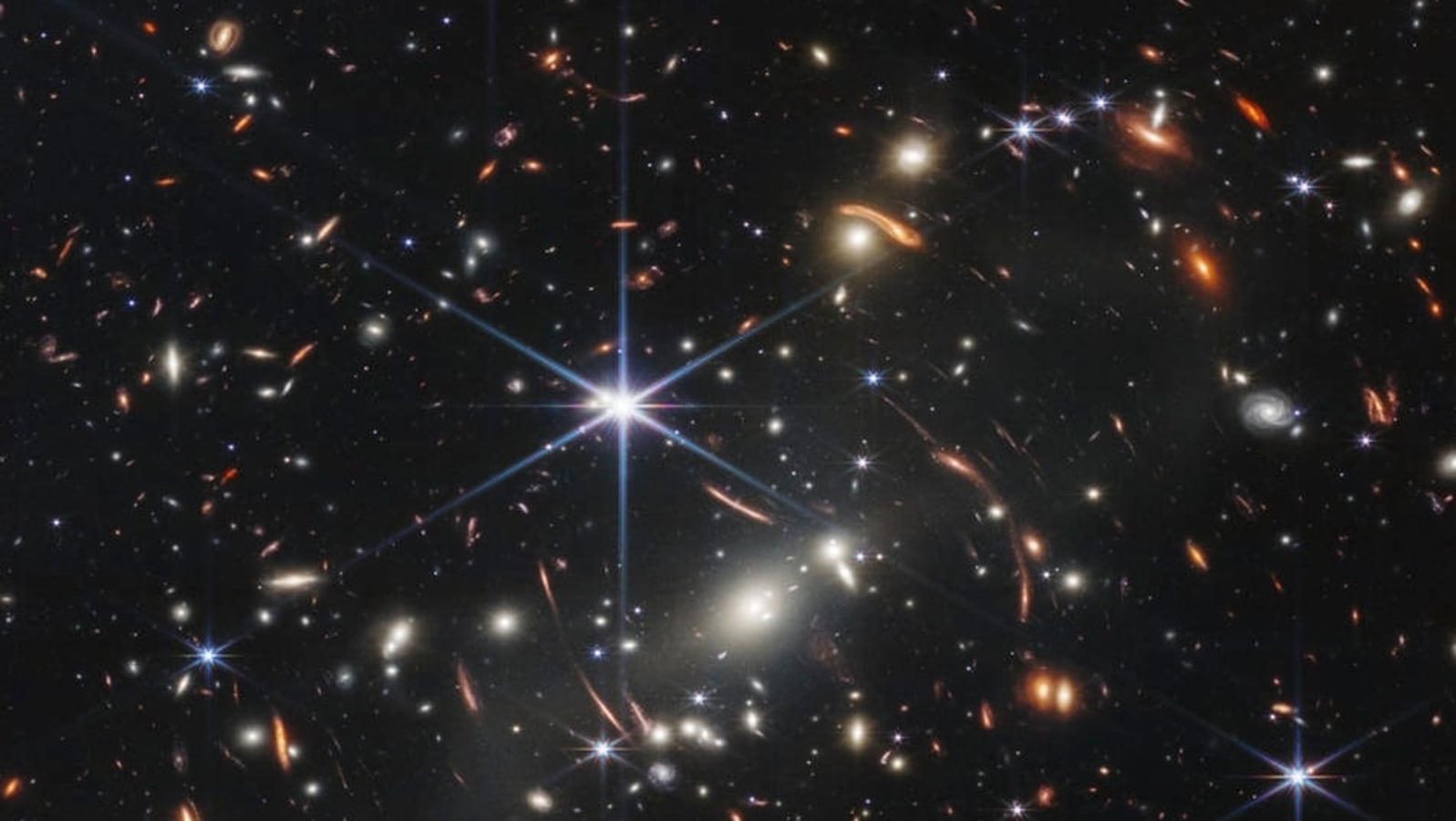It’s out now. A slice of the vast universe captured by NASA’s James Webb Space Telescope in “the deepest, and the sharpest infrared view to date”. US president Joe Biden unveiled the image of galaxy cluster SMACS 0723 – Webb’s First Deep Field – on Monday (local time) at a White House event. Thousands of galaxies are revealed in a tiny sliver of the vast universe in the image, says the US space agency.
Why is it iconic? Here are more details:
1. The image shows the galaxy cluster – SMACS 0723 – as it was 4.6 billion years ago. “The combined mass of this galaxy cluster acts as a gravitational lens, magnifying much more distant galaxies behind it.,” says NASA.
2. With the world’s largest and most powerful telescope seeking the earliest galaxies, a path is set for the researchers to learn more about their masses, ages, histories, and compositions.
3. “The first image from the Webb Space Telescope represents a historic moment for science and technology. For astronomy and space exploration. And for America and all humanity,” said Biden in a tweet after revealing the image.
4. “These images are going to remind the world that America can do big things, and remind the American people – especially our children – that there’s nothing beyond our capacity. We can see possibilities no one has ever seen before. We can go places no one has ever gone before,” he added.
5. The highest-resolution images of the infrared universe ever captured by Webb’s Near-Infrared Camera (NIRCam) brings into focus never-seen-before tiny, faint structures, including star clusters and diffuse features.
6. “Webb’s First Deep Field is not only the first full-color image from the James Webb Space Telescope, it’s the deepest and sharpest infrared image of the distant universe, so far. This image covers a patch of sky approximately the size of a grain of sand held at arm’s length. It’s just a tiny sliver of the vast universe,” said NASA administrator Bill Nelson. “This mission was made possible by human ingenuity – the incredible NASA Webb team and our international partners at the European Space Agency and the Canadian Space Agency. Webb is just the start of what we can accomplish in the future when we work together for the benefit of humanity.”
7. A composite made from images at different wavelengths – totaling 12.5 hours – the deep field is said to have achieved depths at infrared wavelengths beyond the Hubble Space Telescope’s deepest fields. This took weeks.
8. Calling Webb “the golden eye in the sky, John Mather, Webb senior project scientist at NASA’s Goddard Space Flight Center in Greenbelt, Maryland spoke about the potential and expectations: “What happened after the big bang? How did the expanding universe cool down and make black holes and galaxies and stars and planets and people? Astronomers see everything twice: first with pictures, and then with imagination and calculation. But there’s something out there that we’ve never imagined, and I will be as amazed as you are when we find it.”
9. The image is among the telescope’s first-full color images.
10. The deep field – the full suite of images by James Webb Space Telescope science observatory, an international program led by NASA with its partners, ESA (European Space Agency) and CSA (Canadian Space Agency), will be released on Tuesday (at 10:30 a.m. EDT).
